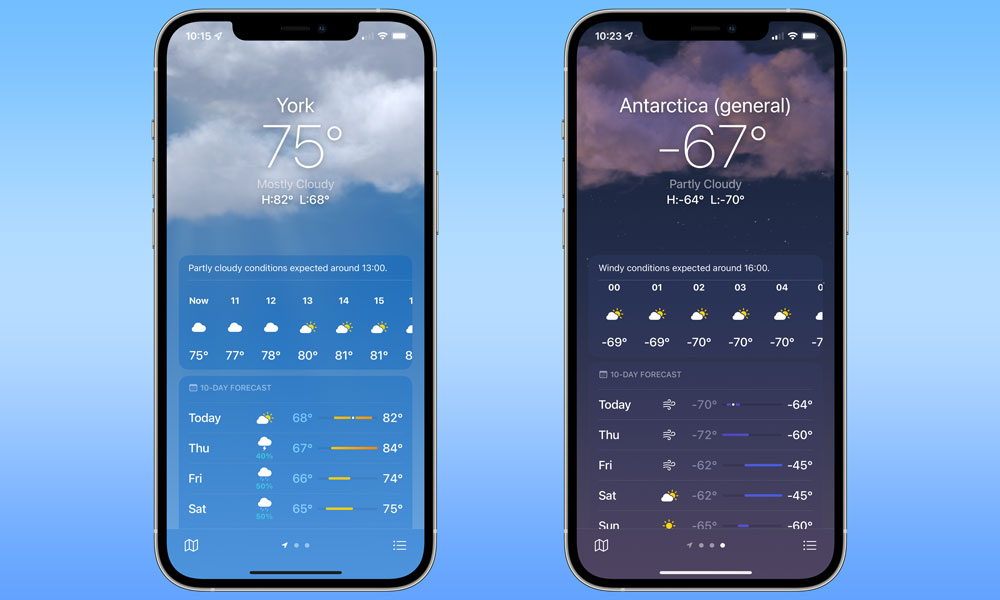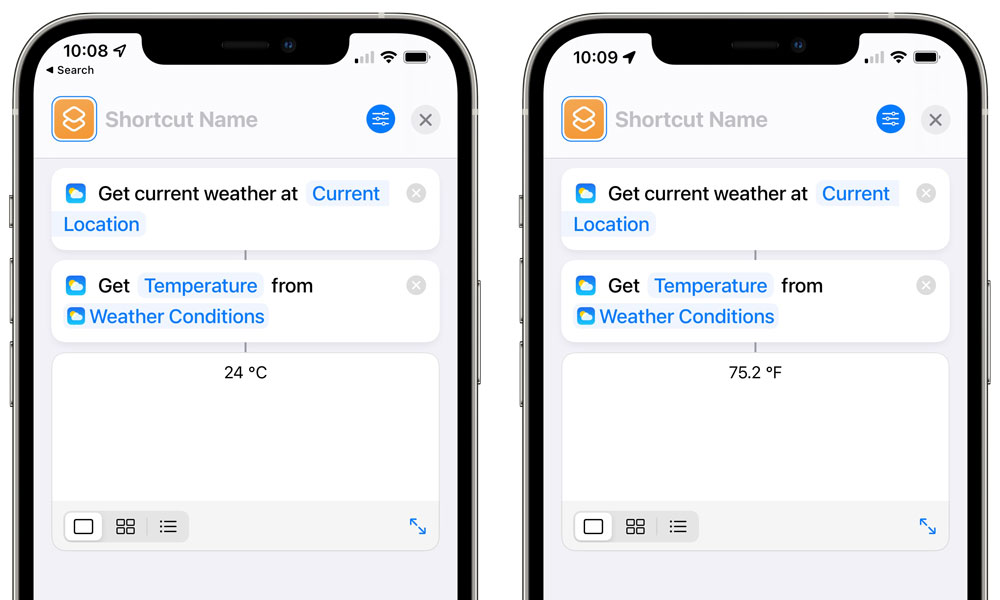Apple’s Weather App Doesn’t Show ’69°F’: The Interesting Reason Why
 Credit: Jesse Hollington
Credit: Jesse Hollington
Toggle Dark Mode
The internet peanut gallery got into a bit of a furor this week when it was revealed that Apple’s own first-party Weather app for the iPhone seemed to be “censoring” the number 69 — skipping over the number entirely when displaying temperatures in Fahrenheit.
The issue was brought into the spotlight by The Verge, which suggested that it may have been a prudish decision on Apple’s part to avoid displaying “the internet’s favourite number.”
However, this quickly became less likely when it was discovered that the Weather app also seems to avoid far less controversial numbers, such as 65 and 71 degrees.
It was also notable that the problem only seems to exist inside the actual Weather app on iOS 14.6 and later. Clicking through to Apple’s Weather.com source will show the correct temperature, but it’s also displayed in the Weather widget on the Home screen.
These points alone should be enough to put any conspiracy theories to rest, however several folks have also come up with a far more reasonable explanation: Apple is simply converting Celsius to Fahrenheit and then rounding the results.
After all, while 20 degrees Celsius conveniently converts to exactly 68 degrees Fahrenheit, 21°C equates to a slightly more awkward 69.8°F.
Basic math will tell you that when rounding to whole numbers, 69.8 becomes 70 — and that’s what the Apple Weather app displays.
The same is also true for the other missing numbers. 18°C is 64.4°F, and 19°C is 66.2°F, both of which completely miss the number 65.
The same applies to 71°F, which sits uncomfortably between the aforementioned 21°C (69.8°F), and 22°C (71.6°F — which rounds to 72).
What’s less clear, however, is when this started and why it’s happening. It’s also a bit of a head-scratcher as to why the Weather widgets have no problem displaying temperatures like 69°F, yet the Weather app skips over them entirely.
For example, as John Gruber points out at Daring Fireball, the iOS 15 betas don’t seem to have this problem. Gruber also confirmed that it doesn’t occur on iOS 13.
Further, as somebody pointed out on Twitter, -69°F displays just fine (for those checking the weather in Antarctica), likely since the closest whole-number Celsius equivalent is -56°C, which converts to -68.8°F — which is easily rounded to -69.
Gruber also goes on to add that it’s extremely silly to assume that Apple would be picky solely about the Weather app, but sadly, “Apple’s reputation for prudishness precedes it.”
Apple’s Compass app will show you 69°. The Finder will tell you if you have 69 files in a folder. Once you start down this path it’s hard to find an app from Apple that won’t display “69” some how, some way, if that’s the value that ought to be displayed. Apple even has products that cost $69.
John Gruber
Weather Data
It’s notable, however, that Apple uses multiple data sources for its weather information, and likely changes this up a bit between iOS versions. For example, as of February 1, 2021, Apple notes that weather data comes from The Weather Channel, the National Oceanic and Atmospheric Administration (NOAA), The Met Office, BreezoMeter, and QWeather.
While these sources are used for a variety of different information, ranging from temperature to precipitation and air quality, it’s likely that at least some of them provide temperatures to Apple behind the scenes using the international standard Metric system.
However, since Fahrenheit is of course the most commonly used temperature unit in the US, Apple has to convert this Celsius data to display it in a format that iPhone users will more easily understand.
In the cases where measurements like 69°F, 65°F, and 71°F are being shown, it’s likely that Apple is pulling the data from sources that provide it in Fahrenheit, or, even more likely, sources that provide a greater degree of decimal precision. For example, 20.5°C works out to almost 69°F (68.9°F, to be precise).
It’s also worth adding that you may be able to observe this effect in Apple’s Shortcuts app — even on iOS 15 — by creating a simple shortcut that pulls the temperature from Apple’s Weather app. Being in Canada, I’ve never gotten anything back from this except for a whole number like 24°C, but users in the US — or anybody who uses Fahrenheit as their system-wide default for temperature units — will end up getting the fractional equivalents like 75.2°F.







